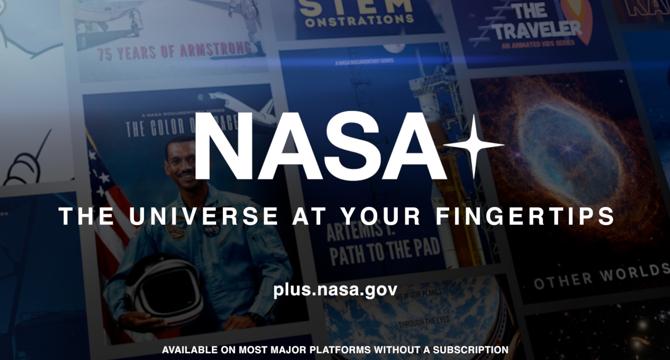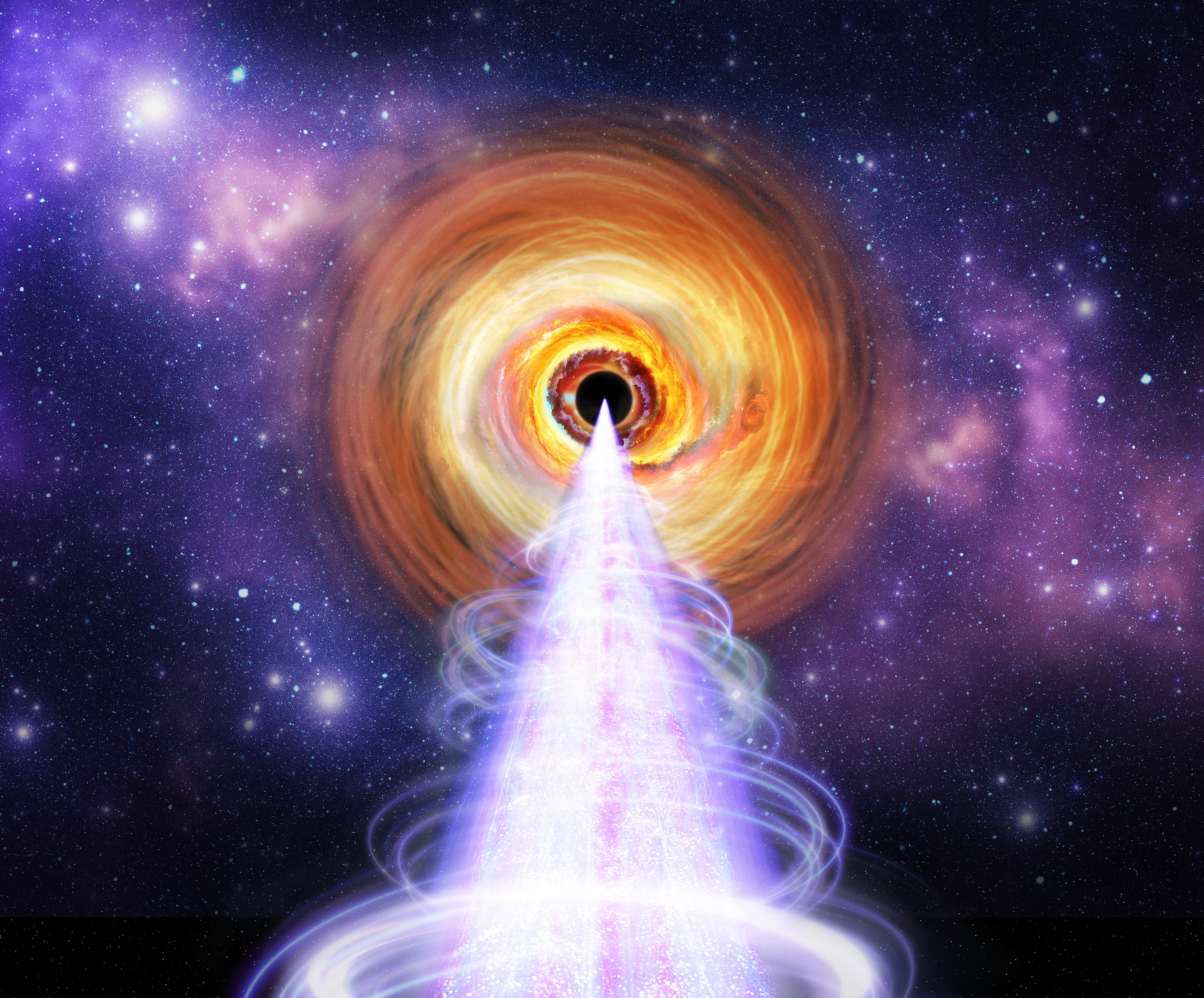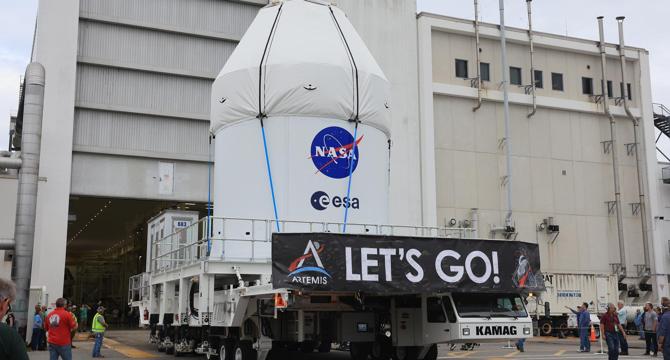Space News
Knowridge
4w
217

Image Credit: Knowridge
Martian landforms look just like Earth’s—And that’s a big deal
- A team of scientists from the University of Rochester discovered that the surface of Mars features soil patterns similar to Earth's coldest regions, known as solifluction lobes.
- These wave-like formations on Mars closely resemble Earth's solifluction lobes in shape and geometric pattern, suggesting a deeper link between the two planets in terms of landscape formation.
- The Martian solifluction lobes, on average 2.6 times taller than Earth's, were likely formed by freeze-sublimate cycles due to scarce surface water and colder temperatures on Mars.
- This discovery provides insights into Mars' ancient climate and the potential presence of ice or past water, offering valuable information for future missions and understanding planetary environments.
Read Full Article
13 Likes
Digitaltrends
4w
254

Image Credit: Digitaltrends
SpaceX given major boost for Starship launch schedule
- SpaceX has completed 8 launches of its Starship rocket, with permission to increase annual launches from 5 to 25.
- FAA has approved 25 landings of the first-stage Super Heavy booster and upper stage Starship spacecraft at Starbase.
- The system will allow SpaceX to reuse the boosters, reducing space mission costs.
- FAA's decision was anticipated as the draft environmental assessment last November endorsed the increased flight rate.
Read Full Article
15 Likes
Nasa
4w
17

Image Credit: Nasa
NASA Live Coverage, Original Content Now Streaming on Prime Video
- NASA's on-demand streaming service, NASA+, has launched a FAST (Free Ad-Supported Television) channel on Prime Video.
- NASA+ is dedicated to sharing stories through live launch coverage, original documentaries, family-friendly content, and more, aiming to inspire new generations through innovation, exploration, and discovery.
- Wes Brown, acting associate administrator for the Office of Communications at NASA Headquarters, mentioned that streaming NASA+ on multiple platforms enables the agency to efficiently share its missions, making content easily accessible to the public.
- Apart from the FAST channel, NASA+ is available for download without a subscription on various major platforms via the NASA App on iOS and Android mobile devices, as well as streaming media players like Roku, Apple TV, and Fire TV.
Read Full Article
1 Like
Nasa
4w
13

Image Credit: Nasa
NASA’s IXPE Reveals X-ray-Generating Particles in Black Hole Jets
- NASA's IXPE, in collaboration with other telescopes, has uncovered how X-rays are generated in a blazar, attributing the emission to interactions between fast-moving electrons and photons.
- The study, soon to be published in Astrophysical Journal Letters, revealed that electron-photons interactions lead to X-ray production within the extreme environment of a black hole.
- IXPE's ability to measure polarization played a key role in determining that electrons, not protons, are responsible for generating X-rays in black hole jets.
- Compton Scattering, a process where electrons interact with photons, was identified as the mechanism behind X-ray emission in the blazar BL Lacertae.
- The observation of BL Lac by IXPE and ground-based telescopes provided valuable insights, with optical polarization reaching a record high of 47.5%.
- The team found that X-rays from BL Lac were less polarized than optical light, confirming electron-photons interactions as the X-ray source.
- This discovery by IXPE has shed light on a longstanding mystery surrounding supermassive black hole jets and emphasized the significance of Compton scattering in X-ray generation.
- IXPE's success in solving this mystery has been lauded by scientists involved in the project, marking a significant contribution to astrophysical research.
- Future research on blazars aims to identify more of these objects and unravel their dynamic nature, which often presents surprises.
- NASA's IXPE mission, a joint effort with the Italian Space Agency, continues to provide groundbreaking data on celestial objects and phenomena.
Read Full Article
Like
Discover more
Nasa
4w
266

Image Credit: Nasa
NASA Progresses Toward Crewed Moon Mission with Spacecraft, Rocket Milestones
- Technicians are moving the Orion spacecraft to the Multi-Payload Processing Facility at Kennedy Space Center for the Artemis II test flight, with the mission rapidly progressing toward launch.
- NASA teams at Kennedy Space Center are integrating and testing all SLS and Orion spacecraft elements, recently achieving milestones like connecting the SLS upper stage to the rocket.
- Artemis II, NASA's first crewed Artemis mission, aims to send four astronauts around the Moon to inform future missions to the Moon and Mars.
- Teams integrated the interim cryogenic propulsion stage with the SLS launch vehicle and completed tests to ensure system communication and readiness.
- Orion spacecraft, equipped with crucial life support systems, moved to be fueled at the Multi-Payload Processing Facility before crewed testing and integration with the launch abort system.
- NASA announced collaborations with international space agencies to fly CubeSats on the mission, enhancing technology and experiment integration as part of the Artemis campaign.
- Launch preparations involve simulations for various scenarios, including cryogenic propellant loading, mission control operations, crew fit checks, and emergency scenario training.
- Summer will see integrated simulations for crew, flight controllers, launch controllers, recovery teams, and mission management to ensure readiness for the Artemis II mission.
- Artemis aims to explore the Moon for scientific discovery, economic benefits, and serve as a stepping stone for future crewed missions to Mars.
Read Full Article
16 Likes
Nasa
4w
404

Image Credit: Nasa
Crew Spends Tuesday Focused on Health Research
- Expedition 73 crew aboard the International Space Station focused on human health research on Tuesday.
- Astronauts conducted various health experiments including eye exams, cardiovascular scans, and a space agricultural study.
- Research included investigating the effects of microgravity on the cardiovascular system and how multiple body systems react to spaceflight.
- Crew members performed tasks like collecting water samples, setting up equipment, and inventorying items for ongoing studies.
Read Full Article
24 Likes
Digitaltrends
4w
315

Image Credit: Digitaltrends
James Webb hunts for a haze-less exoplanet to answer longstanding mystery
- The James Webb Space Telescope is uncovering details about sub-Neptune exoplanets for the first time, which are smaller than ice giants like Neptune but with a gas composition similar to Saturn or Jupiter.
- Astronomers used Webb to study the sub-Neptune planet TOI-421 b, known for its extreme heat of around 1,340 degrees Fahrenheit, making it easier to observe due to the lack of haze in its atmosphere.
- The researchers found water vapor and large amounts of hydrogen in the planet's atmosphere, as well as carbon monoxide and sulfur dioxide, but surprisingly no methane or carbon dioxide, leading to questions about the planet's formation and uniqueness.
- This study opens up new possibilities for studying sub-Neptunes and accelerating our understanding of these planets, with the hope to observe more to unlock further insights. The research is published in The Astrophysical Journal Letters.
Read Full Article
18 Likes
Nasa
4w
409

Image Credit: Nasa
Spot the Station Frequently Asked Questions
- The International Space Station serves as an orbiting laboratory enabling groundbreaking experiments in an extreme space environment.
- NASA's continuous support has allowed astronauts to live and work in space for extended periods, fostering human innovation.
- The space station is a complex international collaboration involving multiple countries, flight crews, and research endeavors.
- It functions as a platform for research, economic development, and future exploration missions to the Moon and Mars.
- The ISS orbits the Earth at 17,500 mph, leading to 16 sunrises and sunsets daily for its inhabitants.
- Viewing opportunities of the ISS vary, with the spacecraft becoming visible during dawn and dusk in preferred locations.
- The Spot the Station mobile app by NASA offers real-time tracking, alerts, and flyover schedules for ISS sightings.
- Users can customize notifications and utilize an augmented reality feature to enhance the viewing experience.
- No additional equipment is needed to observe the ISS, as it is visible to the naked eye and does not require a telescope.
- The augmented reality feature in the app superimposes the ISS's path in the sky, aiding users in locating the station accurately.
Read Full Article
24 Likes
Armaghplanet
4w
44

From Einstein’s Triumph to Spinning Stars: How Armagh Scientists Are Unlocking the Secrets of Heavy Black Holes
- PhD student Ethan Winch led a study exploring how stellar spin and mass loss influence the formation of heavy black holes, connecting gravitational wave discoveries to early stars.
- The detection of massive black holes in the 30-40 solar mass range raised questions about their formation, possibly from low-metallicity stars born in early galaxies.
- Research at Armagh Observatory and Planetarium suggests that fast rotation in massive stars can limit black hole growth by triggering pair instability, setting a core mass limit of 36 solar masses.
- The study highlights the significance of rotation, metallicity, and mass loss in shaping heavy black holes observed today, providing insights into the universe's most massive stars.
Read Full Article
2 Likes
Nasa
4w
26

Image Credit: Nasa
Quantum Sensing via Matter-Wave Interferometry Aboard the International Space Station
- NASA's Cold Atom Lab (CAL) aboard the International Space Station has conducted groundbreaking experiments using ultracold atoms and an atom interferometer to measure gravity and other forces with precision.
- Atom interferometers, previously used on Earth, are now being utilized in space to enable new measurements in space science and benefit from the extended free-fall conditions.
- Experiments in space have shown the robust operation of atom interferometry, paving the way for future tests to verify the universality of free fall and explore Einstein's theory of general relativity.
- CAL's achievements include demonstrating simultaneous atom interferometry with rubidium and potassium quantum gases, measuring vibrations on the space station, and detecting changes in the environment.
- The ability to measure gravity precisely in space using atom interferometry could help in understanding dark matter, dark energy, and testing general relativity in new ways.
- The Cold Atom Lab, launched to the ISS in 2018, allows scientists to study quantum properties of atoms at near absolute zero temperatures, opening up avenues for new discoveries and quantum technologies.
- Bose-Einstein condensates in microgravity offer extended research opportunities, with the Cold Atom Lab facilitating precision measurements by leveraging the quantum nature of atoms.
- Space-based atom interferometry holds promise for groundbreaking discoveries, advancements in quantum technologies, and a transition into a quantum future, according to researchers involved in the project.
- The Cold Atom Lab project at NASA's Jet Propulsion Laboratory is supported by various divisions of NASA, aiming to push the boundaries of quantum science in the unique environment of space.
- The research conducted with the Cold Atom Lab has implications for future space missions, exploration of planetary compositions, understanding cosmological phenomena, and monitoring Earth's resources.
Read Full Article
1 Like
Medium
4w
409

Image Credit: Medium
Failed Soviet spacecraft Kosmos 482 could crash to Earth this week — here’s where it might hit…
- The failed Soviet spacecraft Kosmos 482, launched in 1972 as part of the USSR's Venera program to study Venus, is expected to crash to Earth this week after a malfunction left it stranded in Earth's orbit.
- Experts estimate the chance of Kosmos 482 hitting a populated area to be about 1 in several thousand, with the craft likely to endure reentry at over 150 mph, resembling a cosmic cannonball, as it blazes through the sky.
- Kosmos 482 is one of over 50,000 large pieces of space junk orbiting Earth, highlighting the increasing challenge of managing space debris in our planet's crowded orbital environment.
- This event emphasizes the need to address the growing issue of space debris and uncontrolled reentries, showcasing the modern challenge of managing the cloud of space junk encircling Earth.
Read Full Article
24 Likes
Medium
4w
31

Image Credit: Medium
How to Use SpaceFi zkSync $SPACE for Maximum Returns
- Staking SPACE on SpaceFi zkSync via DappRadar allows you to earn rewards while supporting the blockchain network.
- DappRadar provides a user-friendly interface and data resources for easy staking experience.
- Steps to start staking SPACE on SpaceFi zkSync via DappRadar include creating an account, connecting your wallet, selecting a staking pool, delegating your SPACE, and tracking your rewards.
- Maximize rewards by monitoring staking rewards, diversifying staking strategies, following best practices, and staying informed about market conditions.
Read Full Article
1 Like
Medium
4w
275

Image Credit: Medium
Supercharge Your SpaceFi zkSync $SPACE Experience
- Staking your SPACE on SpaceFi zkSync via DappRadar allows you to earn rewards and support the blockchain network.
- Staking SPACE involves locking up crypto in a wallet to receive additional tokens as rewards, incentivizing network security.
- To start staking, create a DappRadar account, connect your wallet, select a staking pool, delegate your SPACE, and track your rewards.
- Consider monitoring your staking rewards, diversifying staking, and staying informed about risks and market conditions for a successful staking experience.
Read Full Article
16 Likes
For uninterrupted reading, download the app